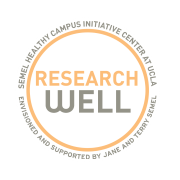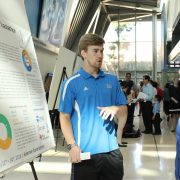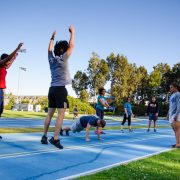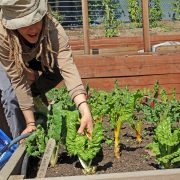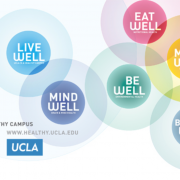3 Easy Steps to Getting a HCI Student Grant
Does your UCLA student organization share the same goals as the UCLA Healthy Campus Initiative (HCI) – to make UCLA the healthiest campus in America?
If so, keep reading as you do not want to miss out on this opportunity. HCI strives to foster health and wellness at UCLA through a variety of activities, and one way is by offering financial support to undergraduate and graduate student organizations that share in the HCI mission and goals. UCLA is home to over a thousand student groups working on countless projects that focus on issues ranging from diabetes prevention, to therapeutic knitting, to social engagement. What do all of these groups have in common? They need funds to operate. HCI is here to help with this need through the HCI Student Group Funding Program and 3-part workshop series. That’s right, applying for grant money is as easy as 1, 2, 3, and HCI is there to help you along the way.
Step 1: Grant Writing
Before applications are due in Fall quarter, HCI hosts a Grant Writing Workshop to inform prospective students about the funding opportunity and how the application process works. In the Grant Writing phase, applicants will be introduced to the core tenets of the HCI mission. HCI believes a healthy campus must foster a high level of wellness, encourage personal responsibility, respect diversity, strive to reduce inequities in health, and be integrative. HCI organizes its own efforts through the 7 HCI pods. The pods focus on different aspects of health and wellbeing, including BEWell, MindWell, MoveWell, EngageWell, BreatheWell, EatWell, and ResearchWell. Through the workshop, applicants will learn how to develop an HCI grant proposal and make the case for using HCI funds to achieve shared goals. Maybe you would like to host a conference featuring experts who can speak to eating on a budget? Or maybe you would like to implement activity breaks in the residence halls? Or maybe you want to create opportunities for graduate students to coalesce and support their mental and emotional wellbeing? Grants help support all of these things! The Grant Writing workshop will help you connect your organizational goals with the HCI mission at UCLA.
Step 2: Evaluation
In addition to funding a student program, event, or activity, HCI will assist student organizations with evaluating the impact of their work among UCLA students. As part of the grant writing process, student organizations must propose a method to evaluate their work. You may distribute a satisfaction survey to participants in your cooking class or you might track participation and calories burned in a running club. The HCI Evaluation Workshop hosted at the start of Winter quarter will provide instruction on a range of methods your organization can use to evaluate your efforts and build on your success.
Step 3: Creating a Poster
This step is the most exciting out of the three! Every year HCI hosts a huge celebration toward the end of Spring quarter to acknowledge and share the collective efforts to address health and wellbeing throughout the year. As a recipient of HCI funding, student organizations will be invited to showcase their work to all in attendance and build connections with other students, faculty, and staff who share their passions. Worried your poster skills aren’t crafty enough? Don’t worry, HCI connects you with a UCLA librarian and members of the Research Well pod who will help you make a professional and engaging poster. They will even pay to have it printed for you to use at the HCI Celebration and at your own future events.
That’s it — three easy steps to getting your student group some extra funds to use throughout the year. Whose student group needs money? Yours does. What is HCI’s grant program for? Getting student groups working on health and wellness the money they need. When do you apply? Applications are due by late October of Fall quarter. Where do you find more information? HCI’s website. Why apply for a grant? It could really benefit your organization.
Aubrey Freitas is an undergraduate student at UCLA double majoring in English Literature and Psychology with a minor in Italian. She is a blogger for the UCLA Healthy Campus Initiative in the Mind Well section, which focuses on the importance of mindfulness and mental health. Aubrey is the founder of the organization Warm Hearts to Warm Hands, which teaches the skill of knitting to people of the community in return for their donation of an article of clothing they create with the skill, to be given to local homeless shelters.
